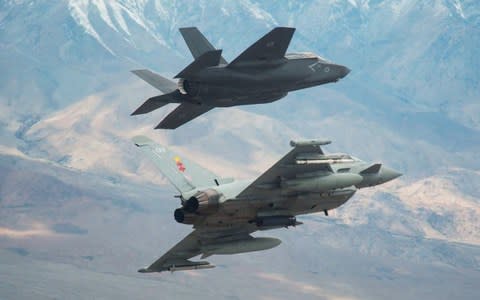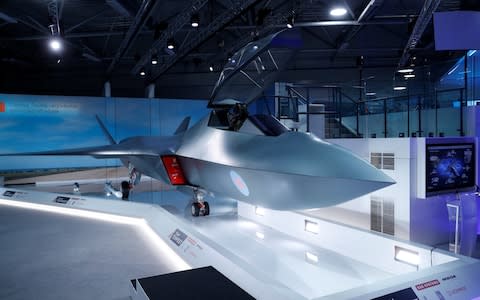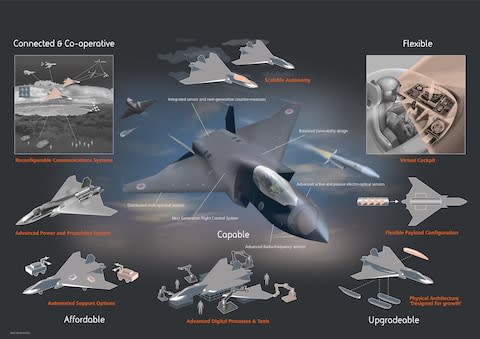Unmanned Tempest jet unveiled as Britain's model for future warfare

Britain is aiming to be the first nation in the world to have a fleet of unmanned fighter jets, it has emerged, as the new Tempest jet was unveiled.
The Defence Secretary, Gavin Williamson, said the Ministry of Defence (MoD) will invest £2 billion by 2025 to deliver the new plane, which will be in service by 2035.
The ability for some aircraft to fly on missions unmanned will significantly reduce the risk to pilots. Tempest will be able to operate against the highest threats whilst minimising the chances of losing aircrew.
The Tempest fighter jet will be "optionally manned" and will be able to be flown without a pilot in the aircraft. Future laser Directed Energy Weapons will also be incorporated. Tempest is designed to replace the Typhoon and will operate alongside the new F-35.

Announcing the publication of the new Combat Air Strategy at the Farnborough International Airshow, the Defence Minister said the funding of the new project would be split equally between the Government and industry.
Mr Williamson said the MoD will “deliver a business case by the end of the year, and will have initial conclusions on international partners by next summer”.
“Final investment decisions [will be] made by 2025. The aim is then for a next generation platform to have operational capability by 2035.”
“Today’s news leaves industry, our military, the country, and our allies in no doubt that the UK will be flying high in the combat air sector as we move into the next generation.”
“A strong national Combat Air sector gives the UK the military capability we need to defend the country... and choice in how we provide that capability without relying on others.”

The £2bn is not new money, but was put in place in the 2015 Strategic Defence and Security Review, an MoD spokesman said.
It is not known how much money industry has so far committed.
A Defence spokesman told the Telegraph partnership with industry was a reality of today’s defence market.
“We look for any partners and are keen to partner in Europe,” he said.
The MoD refused to say whether Tempest would be part of the joint project between France and Germany for a future fighter plane. A collaborative project was announced earlier this year at the Berlin Air Show by the defence ministers of France and Germany.
The new aircraft will be designed to operate as part of a 'swarm' of manned and unmanned fighters. One pilot could act as the leader of a group of weapon-carrying but unmanned planes in order to overwhelm enemy defences.

Paul Smith, a former RAF Typhoon pilot who is a BAE Systems test pilot, said "no matter how smart the enemy air defence system is, if there are too many targets in a swarm it cannot cope".
The laser - or Directed Energy Weapon as it is known - will in effect offer unlimited ammunition to the Tempest, as well as the ability to disrupt electronic systems and destroy aircraft. It is realistic to expect such a capability by 2035, Mr Smith said.
"It is a pretty aggressive and forward-looking programme," Mr Smith said. He added that while it was always good to have a pilot for oversight purposes, in high-threat environments, having the ability to operate unmanned systems is always a good thing so as not to risk pilots' lives.
Tim Ripley, an aviation expert for Jane’s Defence, told the Telegraph the Tempest was key to the future of the UK’s combat aircraft industry.
Referring to the 15 per cent stake the UK has in the F-35 programme, he said: “It’s much better to be a leader than just a builder of components for another project”.

 Yahoo News
Yahoo News 
